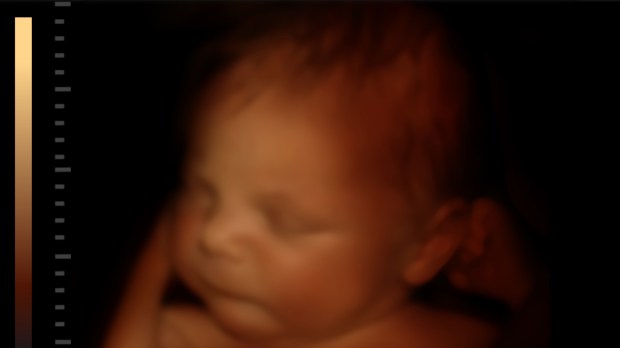Science has already tried to peek, seeking not to be intrusive, into the amazing and very rich life of human beings when they are still separated from the outside world by their mother’s body. From the very start, fetuses gradually, in an increasingly complex way, have various relationships with the uterine environment, with their mother, with other people who interact with the mother and with her fetus, and also with themselves.
Babies even learn the cadence of their mother tongue while still in the womb. They practice understanding and recognizing sounds, even to the point where after birth they can recognize melodies they had only heard while still inside their mother’s body.
It was only recently discovered that babies “practice” crying. Indeed, the most recent research seems to confirm it. A study from Durham University has observed that babies are able to make facial expressions in the second and third trimesters.
The study shows how certain facial expressions related to crying and laughter are increasingly common as fetal development progresses. The more a baby’s growth proceeds physiologically, the more what they call “cry-face gestalt” facial movements increase, from 0% at 24 weeks up to 42% by 35 weeks. And over the same period of time, “laughter-face gestalt” facial expressions increased from 0% to 35%.
Indeed, all parents of infants know how clear and unambiguous their little ones’ expressions of distress or suffering are (and how much they can cost in terms of sacrificed hours of sleep!). They’ve also experienced the joy of seeing their baby’s face light up with laughter.
The author of the research, Nadja Reissland, correlated these observations with physiological developmental milestones: if such expressions are partly or totally missing, it’s a clear sign that the child’s facial and general development is not in the normal range.
Developmental milestones leads to important skills
This development of the ability to express sorrow or suffering as well as joy and mirth before birth is vital precisely because it allows us to have a say in the world of relationships into which we are born. Thanks to the “skill” of crying we find ourselves able to present our primary needs, and to express what pleases us, unequivocally, already at birth.
How can scientists tell when a fetus is crying using 4D ultrasound? Not from the sound of crying or from tears, but from certain movements and behaviors listed in the study, such as raising the inner brow, lowering the brow, wrinkling the nose, movements of the lower lip, etc.
The child, then, gains increasingly complex capacities at each stage of its prenatal existence, in preparation for its future outside the womb. Yet still while in the womb, the unborn baby already has a complex set of experiences, positive and negative, that begin to build its character and even its future personality.
The more science progresses in the careful study of intrauterine life the more we understand, and should imperatively respect, the value of each person from the very beginning of his or her existence.



